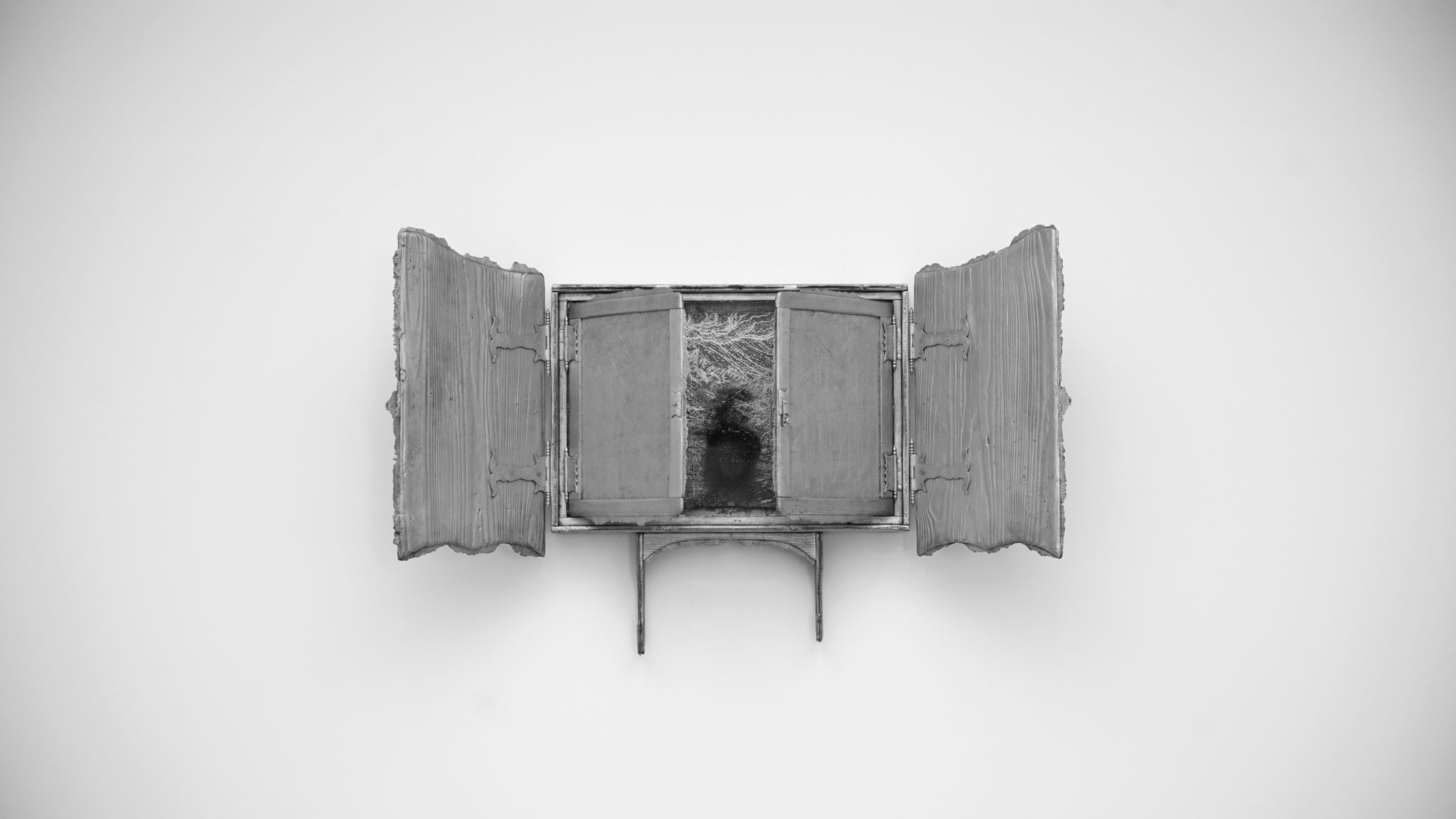
Ling Gao
“Nature had used her talent to imitate art.” (Ovid, Metamorphoses, 3.157–8)
On the fourth floor of the Yale University Art Gallery, its newest exhibition reinterprets the myth of the goddess Diana and the young hunter Actaeon in an enthralling artistic representation of the natural world.
After making my way through the bubbling crystal colors of “A Nation Reflected: Stories in American Glass,” the sudden silence of both sound and color catches me off guard as I enter into the white-walled staircase at the end of the room. At the top, written in bold black and gray, “Matthew Barney: Redoubt,” tells me I’m in the right place. Virtually devoid of sensual stimulation other than the clacking of my shoes, the enclosure of the space inspires a heightened consciousness of my solitude as I make my way up the steps, the sound of chatter in the previous gallery already fading away behind me.
The first major display of Matthew Barney’s ’89 work at his alma mater is a multimedia project — titled “Redoubt” — comprised of a series of engravings, electroplated copper plates and monumental sculptures, centering around a 134-minute feature film set in the snowy Sawtooth Mountains of Idaho. The film tracks a series of wolf hunts over six days, drawing on the myth of Diana, goddess of the hunt, and Actaeon, a young hunter who accidentally gazes upon the bathing goddess and is turned into a stag by her as punishment, ultimately torn apart by his hunting dogs in Ovid’s Metamorphoses. The Actaeon figure is portrayed by Barney himself as “the Engraver,” who documents the huntresses — Diana and two female attendants — and their journey through the mountains with metal engravings.
Upon entering the first main exhibit room, I am immediately confronted by the end of a tree trunk pointing a bit too unnervingly at the door. Two tree trunks delicately nestled on white pillows rest on a pure white contraption; the pure white and soft delicacy of the pillows is jarring against the trunks, one burnt, one gleaming gold. More silence. The sound of my jacket unzipping is a harsh crack amid the silence, echoing throughout the room. For a moment, I’m half afraid I’ve set a snowy white hare dashing off in fright. And is that the smell of charcoal in the air?
The exhibition contains four of these large-scale sculptures, made by pouring molten copper and brass through tree trunks harvested from a wildfire-scorched forest in the Sawtooth mountains. I almost miss the final sculpture in the sequence, Diana, hidden away in a small room to the side of the main room that houses the Virgins. One stumbles upon her much like Actaeon stumbles upon the bathing goddess. An effort must be made to see her, to understand her. Barney, in an interview with YUAG, said that Diana was a figure of contradictions for him, the goddess of the hunt who also kills the wolves sacred to her. The trunk resembles a telescope pointing towards the sky with explosive power. Through her, we are meant to see into the mysteries of the cosmos.
Along the walls, several sets of copper engravings, meant to be the creations of “The Engraver” from the film, show scenes of Diana’s hunt in the Idaho mountains. Unlike Ovid’s Diana, Barney’s huntress has no qualms about being seen. The Engraver is permitted to look on her, and she gazes back at her viewer, unfazed by this intensely intimate scrutiny as he carves out her likeness. She is also silent as a different pattern of her mouth is hidden from sight, putting all the more focus on her eyes.
A steeper, longer staircase leads to the final portion of the exhibition, where a “cast copper cabinet” catches my attention. Named simply “Redoubt,” it resembles a three-paneled altarpiece, guarded by two layers of cabinet doors, the outer layer opened wide and the inner layer half closed, etched with a scene of a forest. Taking care not to overstep the black line guarding the piece, I walk from one side to the other, bending my head in an attempt to gauge the full view of the mountains within. The form of the piece gives a divine sanctity and an aura of mystery to the natural subject. It is not meant to be easily accessed, enhancing the isolation of both the viewer and the natural world within.
“Redoubt” is a journey upwards. The tranquility, the multiple ascending staircases, the sheer whiteness of the walls and the works made of real life tree trunks lying along the way, bring the viewer along a trek up the Sawtooth Mountains heavily bedded with snow.
At the very end of the exhibition, a window looking out on High Street reminds me of the immediate world beneath. Barney’s exhibition is no doubt a redoubt, an isolated, otherworldly fortress that transports us into a deep connection with nature and the cosmos.
And with a gentle ding of the elevator, I descend back down to reality.
Carrie Zhou | pinyi.zhou@yale.edu .







